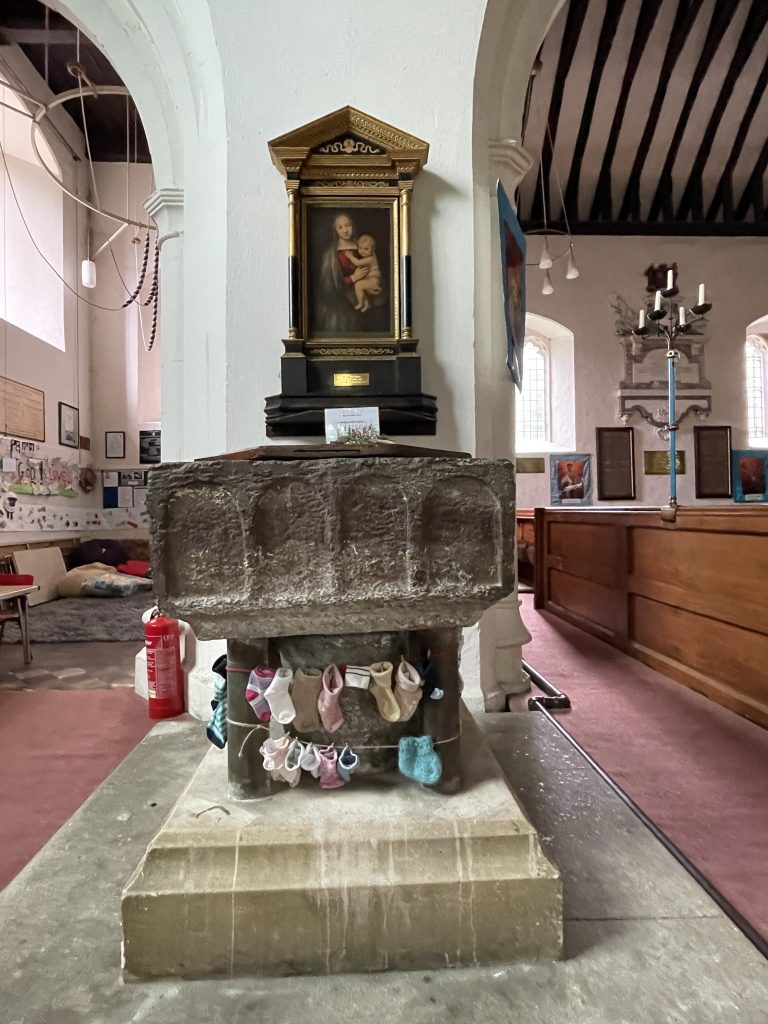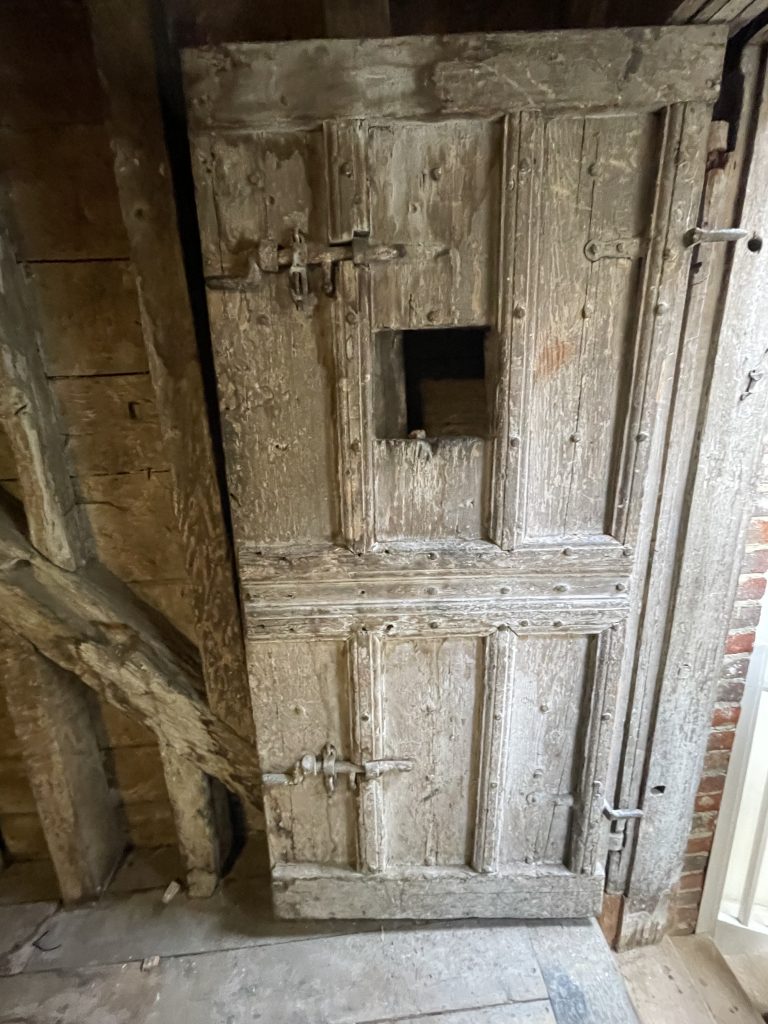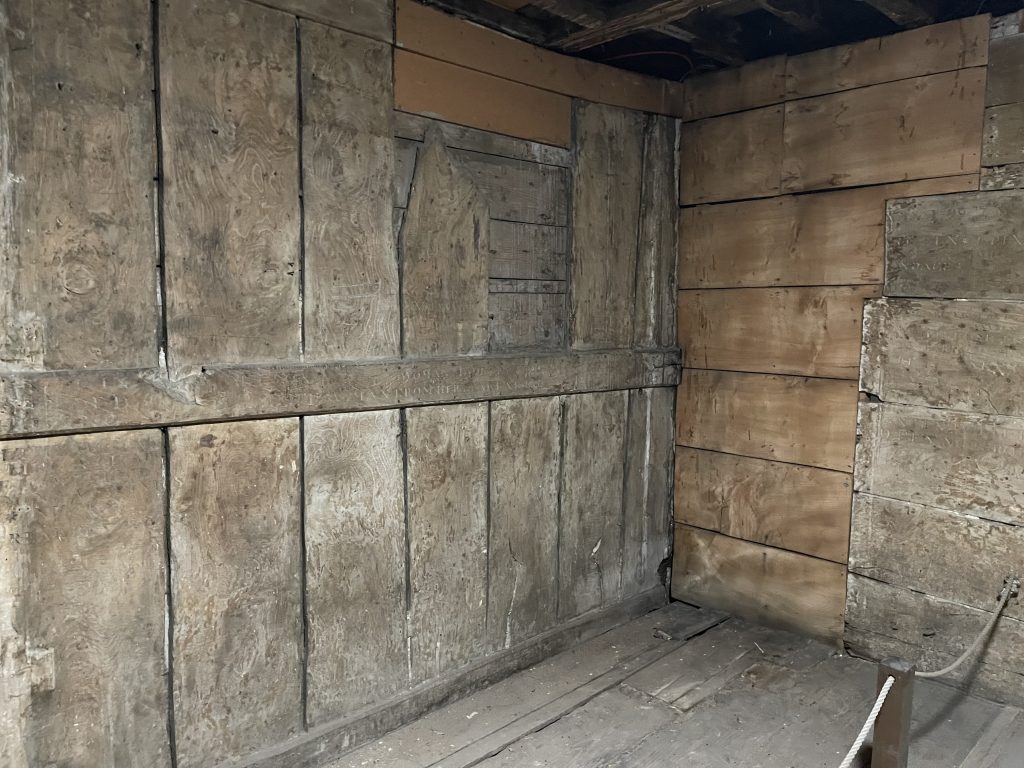Travels with my Ancestors # 5: Kentish men and women – The Heather / Eather family
I am in Kent, in the southeast of England. There are two villages and one town I’m here to see. All three places are related to the story of my Heather/ Eather ancestors, my paternal grandmother’s forebears, who lived in this little corner of England from the 1600’s.
Robert Heather and his wife Mary moved to the village of Chislehurst in about 1640. Together they had a daughter and five sons; each successive generation naming their eldest son Robert. For over twelve decades the Heathers were baptised, married and buried at St Nicholas’ church in the village.
Today that church stands sturdily, overlooking the expansive Chislehurst Common, a swathe of green within the suburban landscape of southeast London that has overlaid the village of yesteryear. The Common is threaded with quiet walking paths through stands of spreading oaks. Squirrels scamper up trees as I pass, a spring chorus of birds follows me through this timeless place.
A strange circular depression in the grass is a puzzle – a former pond? A bomb crater from the war? – until I see a small plaque labelling it as ‘Chislehurst Cockpit’. I have an awful feeling that I know what this was.



Later, I google it and my suspicion is confirmed – it is a leftover from the days when village pastimes were bloodier and more violent than today’s football or cricket matches. Cockfighting, single stick fighting and other such entertainments were pursued there until banned by more squeamish authorities in Victorian times.
Now to the church. St Nicholas has stood since the 15th century, though the site has seen worship for over a thousand years. The Norman font is still in use today: all those Heather babies baptised with water from its stone basin. When I look closer, I notice a very sweet modern addition: a garland of knitted babies’ booties and tiny socks around its base.




I stand at the altar, where I imagine successive Robert Heathers and their brides reciting their wedding vows. Were their eyes fixed on the embroidered tapestry or intricate carving behind the Reverend? Unable to read, they may have enjoyed the storytelling in these artworks.

The Heathers were not wealthy, too poor to have afforded a stone monument to mark the life and death of one of their number. Many Heather bones lie beneath the soil in the churchyard; if they once had a simple wooden cross to mark their places, they have long since rotted away. But the earth here has been enriched by the blood and bone of generations of the Heathers.
In Maidstone, I want to find the place where one of the Heather sons, Thomas, was tried, sentenced and imprisoned in 1788. I have researched the town’s history and learnt that the Court House and Gaol were once in what today is the Town Hall.
When I get there, I am disappointed to find the doors firmly closed and locked. This I had not anticipated. Then I notice a small old-fashioned doorbell with a sign above it that reads ‘Please ring.’ Should I? I decide that yes, I should: I am here for this one day; my only chance to see where these events played out. So I press the button. Nothing happens.

I swallow my disappointment and am about to turn away, when I notice a more modern-looking button. I press it. Long moments pass, before a young man pops his head around the door.
Quickly I say, ‘I’m from Australia, and an ancestor of mine was tried and imprisoned here. I was hoping to see the place where this happened.’
He hesitates, then smiles. ‘I was just about to do the fire drill, but I’ve got a few minutes. Come on in.’
Scarcely believing my luck, I follow him inside and up a flight of stairs to a large room where, he tells me, the local council meetings now take place. High on the wall at one end of the room is a plaque with the insignia of British justice, and the young man, whose name is Russell, tells me that it was here that judges meted out punishment to those who, like Thomas, had broken the law.
I can imagine it: Thomas in the dock, the bewigged judge stern-faced on a high bench above him. Thomas’ crime had not been a trivial one: he was accused of ‘Highway Robbery’, having stolen goods from a man on a road while brandishing a weapon – a hoe? A pick? Or even a musket or pistol? The place where this happened was very possibly a road near the same Chislehurst Common I recently walked across.
Whether he knew it or not, this was one of the many offences that attracted the Death penalty. Thomas would hang.
He was taken to a cell, which is where Russell and I now go. Up a flight of narrow stairs, through a heavy door with a small square peephole cut into its thickness. What was once a gaol cell is now an empty room. In places, letters and dates have been carved into the the bare walls and floor – this is Georgian-era graffiti by educated prisoners who could write.
I ask Russell how many prisoners would be accommodated in this room.
‘Up to sixty, at times,’ he tells me. ‘Men, women and children.’



Fortunately for Thomas (and his descendants) he did not hang. His death sentence was commuted to a term of transportation: fourteen years across the seas in the new penal colony of New South Wales. He spent a total of two years in that cell in Maidstone, before being transferred to one of the prison hulks on the Thames in London.
Then in 1789 he was on board the prison ship Neptune, bound for Sydney. He survived that voyage on the worst ship of the worst convict fleet to leave Britain – but that is a whole other story.
For now, I am grateful that he made it to Australia, and that I pressed that bell at the Maidstone Town Hall in order to see where these life changing events took place.
PS. If you are wondering how Thomas Heather became Thomas Eather, imagine this: You have just been disembarked at Sydney after a hellish voyage, and a pasty-faced clerk demands your name, quill poised over a ledger book. In your Kentish accent, you reply ‘Thomas Heather’, dropping the ‘h’ as you always do. What the clerk hears and records is ‘Thomas Eather.’ And so the Australian Eather family has his origins in a dropped ‘aitch.’
Related
You May Also Like



10 Comments
Kath
I have a Great Great Great Grandfather called Robert Heather who was born in 1806 in Horton Kirby, Kent in my family tree. I believe his father to be William who was born in 1776 in Greenwich, Kent. Thank you for sharing your findings, they are fascinating. I’m sure we are related somewhere along the way!
Denise Newton
Thanks for reading and your comment, Kath. It is engrossing, family history, isn’t it? I’m glad you have enjoyed my ‘travels with ancestors.’ I’ll need to go back and look at the tree, as I’m sure our Heathers connect somewhere!
Denise Newton
Hi Kath it’s very likely we have ancestors in common. The Heather tradition was to name first born sons of first born sons ‘Robert’. So it’s possible we have a Robert in common somewhere!
Lesley
thank you so much for your insights and what a fabulous trip, you will be related to my husband through his 4 x GG parents Robert Eather and Mary Lynch, their son Robert Vincent.
Denise Newton
Hi Lesley thanks for reading! Yes I would be related somehow as I also descend via Robert and Mary and their son Robert. Not sure what that makes us though – the whole ‘second or third cousin twice removed’ thing does my head in! I have Robert and Mary’s story in two posts on the blog and will be following that with Robert V and Ann’s soon, also.
Lesley
I agree I need a glass of wine to sit and work that out! Robert and Ann’s son William Tobias is his great great grandfather. I grew up in Richmond not realising how much history I would be marrying into, I taught Sunday School at St Peters in my teens and we were married at St Matthews Windsor, I often wonder how many spirits of my husbands ancestors were watching on as some of them had married in those churches. I just love it, I was so excited to find your blog!
Sarah Amanda Abercrombie
To Denise Newton. What a lovely website you have dedicated to your ancestors.
A joy to read, informative articles and Pretty too.
Thankyou for the photos of your travels to UK.
I’m doing my own family searc, with hundreds of other folk across the world.
I came across your website, whilst researching the Old Bailey Archives UK.
Denise Newton
Thank you Sarah. I love getting comments from readers who have chanced upon my jottings about my family tree discoveries. It is so absorbing to delve into the past and see what you can find there. I wish you the happiest of times in your own searching.
Paul Fitzgerald
Hi Denise – thank for the enjoyable and informative narrative about Thomas Eather. He and Elizabeth Lee are distant relatives via a daughter Ann Eather. It is great to find out about the earlier heritage. I have the lineage back to Robert Heather (Kent) – it matches perfectly with your findings.
Best wishes Paul Fitzgerald
Denise Newton
Hi Paul, thanks for your comment; it’s always nice to hear from a fellow Eather descendant. I’ve been a little surprised and very pleased to be contacted by so many relatives from all over Australia and even across the seas from my blog articles!